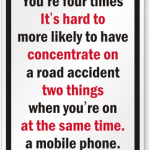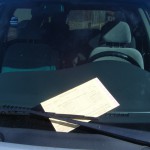Dangerous Drivers, Dangerous Roads: Licensing Failures
Death is almost universally feared. Many travelers avoid swimming in open waters or flying because they fear death by shark attack or plane crash. Statistics prove that cars and other motor vehicle use may be the most deadly killer apart from disease. An average person has a 1 in 11,500,000 chance of getting attacked by a shark and a 1 in 354,319 chance of dying in an airplane accident, but a 1 in 84 chance of passing away from a motor vehicle accident.
The rampant acceptance of cars and motor vehicles as transportation often blinds society to the dangers inherent in driving. Children as young as seven may illegally take out cars for joyriding. Nowadays, every state uses licensing laws and drivers tests to ensure the competency of drivers on the road. As a result, the incidence of accident has decreased significantly since 1980 from 53,200 a year to 35,800 in 2009 according to the US Census Bureau. The incidence of accidents still remains rather high, but increased standards have decreased fatalities.
Originally, motor vehicle owners only needed the keys and gas to drive their vehicles. Massachusetts and Missouri set the precedent for licensing laws in 1903 when they required drivers to purchase licenses to legally drive. A license existed only as a formality, more useful in raising tax revenue than anything else. The only requirement to obtain a license was money. As regulations increased, states began to require drivers to register their vehicles and post their registration numbers on the front and back of their vehicles.
With more vehicles on the road, more accidents occurred. An article published by the New York Times called for stricter auto laws to “safeguard the public” as early as 1907. By 1908, Rhode Island set the precedent for state exams for drivers to prove their competency. Even with the raised requirements for competent drivers, many motorists continued to drive without state licensure or testing.
In 1910, New Jersey passed the Callan automobile law which required chauffeurs to pass a driving test to become certified under the law. Secretary of State Samuel S. Koenig asked police authorities to “be lenient in all cases where no serious infraction of the law was evident” (NYTimes). Koenig reasoned that many drivers would have issues adjusting to this new change from the department’s mechanical difficulty in producing enough registration numbers. Still, this leniency also negated the effect of requiring drivers to achieve a minimal level of competency before hitting the roads.
In the sixty days after the Callan law went into effect, over twenty thousand chauffeurs passed the new written test to qualify as “experienced drivers.” Hundreds of applicants failed to obtain their license due to their insufficient knowledge of an automobile on the written exam or inability to handle a car in traffic during the road exam. Nowadays, the licensing process now involves a series of steps from drivers education, a written/electronic test, a learners permit, a set number of hours on the road, a road test, and in some cases, a provisionary license. The requirements for these vary state by state. Many potential drivers fail to pass at certain steps along the way (full disclosure: I took my road test twice).
Certainly, we’ve come a long way from free reign of the road, but our roads remain dangerous. The National Drivers Test survey reports that almost 1 in 5 drivers would fail a written drivers test if they took it today. In fact, 73 percent of the American motorist population failed to identify a safe following distance, and 85 percent could not choose the proper action to take in the event of a yellow light. Looking at the facts state by state, New York drivers rank last with an average barely over passing (70%), while Kansas ranks first with an average score of 82.3 percent.
American drivers should be able to score at least in the 90th percentile. In America, failing children cannot graduate high school. Why should failing drivers be allowed to graduate to the road?
– A. Li
Related Posts
Category: Regulations


















